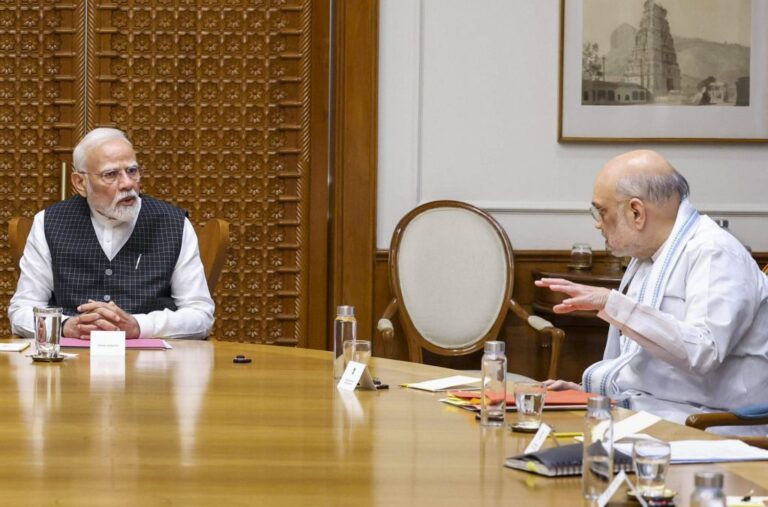Maharashtra Government Allocates Rs 3,000 Crore for Temples and Memorials Amid Financial Strain
Maharashtra Government Allocates ₹3,000 Crore for Temple Renovations Amid Financial Strain
In a surprising move, the financially constrained Maharashtra government announced a substantial allocation of approximately ₹3,000 crore dedicated to the preservation and renovation of several significant memorials and temples across the state. This decision, made during a cabinet meeting on Wednesday, aims to enhance cultural heritage and boost tourism while re-energizing the local economy.
Prioritize Preservation: Focus on iconic temples and memorials
Among the prominent initiatives included in this allocation is a significant ₹681.3 crore plan earmarked for the restoration of the memorial dedicated to the revered 18th-century warrior queen, Ahilyadevi Holkar. Located in Chaundi village—her birthplace—the restoration project has been prioritized alongside the upcoming commemoration of her 300th birth anniversary.
In addition to the Ahilyadevi Holkar project, the Maharashtra cabinet also approved development plans totaling ₹5,503 crore for seven major pilgrimage centers in the region. These renovations are not solely centered around reinforcing historical structures; they also aim to invigorate tourism, encouraging visitors to explore Maharashtra’s rich cultural landscapes.
Funding Breakdown for Pilgrimage Centers
A closer look at the allocations reveals substantial funds dedicated to specific temples:
- ₹147.8 crore for the Ashtavinayak Temples
- ₹1,865 crore for the Tuljabhavani Temple in Tuljapur
- ₹259.6 crore for the Jyotiba Temple in Kolhapur
- ₹275 crore for the Trimbakeshwar Temple
- ₹1,445 crore for the Mahalaxmi Mandir
- ₹829 crore for the Mahurgad Development Project
Administrative approval was granted to four of the seven proposed projects during the cabinet meeting, further emphasizing the government’s commitment to enhancing these vital religious sites.
Revamping the Ashtavinayak Temples
The Ashtavinayak temples hold a particular significance in Maharashtra, renowned as a major pilgrimage circuit attracting devotees and tourists alike. The approved development plan of ₹147.8 crore includes a substantial allocation of ₹100 crore directed towards temple restorations, alongside ₹47.4 crore earmarked for electrification, lighting, and architectural consultancy.
This effort aims not only to restore the temples to their former glory but also to improve civic amenities for devotees visiting the site.
Tuljabhavani Temple: A Year-Round Attraction
One of the highlighted projects is the development plan for the Tuljabhavani Temple, known for drawing devotees year-round, especially during the auspicious Navratri festival. The ₹1,865 crore allocation assures comprehensive renovations that respect the original architectural style, as indicated by recent government instructions to preserve historical integrity.
The Jyotiba Temple in Kolhapur, which is another significant cultural landmark, has also received a healthy budget of ₹259.6 crore. The scope of this project includes the renovation of the temple itself alongside surrounding lakes, slated for completion by March 31, 2027.
Community and Economic Impact
The overarching intention behind this ambitious funding initiative is to revitalize not just spiritual but also economic life throughout Maharashtra.
- Job Creation: The renovation projects are expected to generate multiple job opportunities for local communities.
- Boosting Tourism: Enhanced facilities and restored heritage sites are likely to entice both local and foreign tourists, amplifying revenue for the state.
- Cultural Pride: Engaging in the preservation of historical figures and sites instills a sense of cultural pride among citizens and paves the way for historical education.
Challenges Ahead
Despite the spirited plans, some critics argue that the government’s focus on temple renovations may be misplaced given the state’s financial troubles. Amidst issues of unemployment, inflation, and educational reform, the allocation of nearly ₹3,000 crore toward temples could stir public debate and concern regarding the prioritization of funds.
Moreover, crafting a comprehensive strategy that balances historical preservation with practical socioeconomic development will be crucial moving forward.
Looking Ahead
With the Maharashtra government’s plans to undertake these extensive renovation and preservation projects, the potential exists to enrich the cultural fabric of the state and bolster tourism. Yet, the path ahead demands careful navigation to ensure that these initiatives truly serve the communities involved and honor the rich history encapsulated in these temples and memorials.
As the restoration efforts commence, all eyes will be on the outcomes—both in terms of cultural significance and tangible economic benefits, setting a precedent for similar governmental initiatives across the nation.






